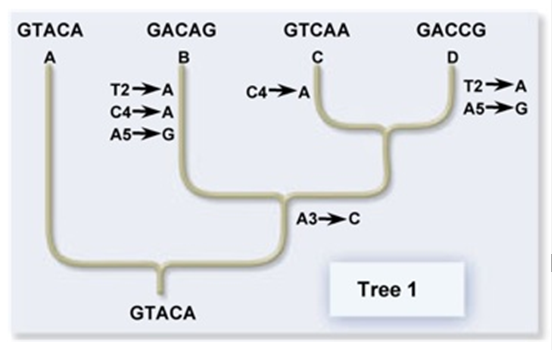Which cell component is composed of microtubules and helps move chromosomes around during cell division?
A) centriole
B) chromatin
C) cytoskeletal element
D) nucleolus
A
You might also like to view...
Centrioles, cilia, flagella, and basal bodies have remarkably similar structural elements and arrangements. Which of the following hypotheses is most plausible in light of such structural similarities?
A) Cilia and flagella arise from centrioles. B) Loss of basal bodies should prevent cells from dividing in two. C) Motor proteins such as dynein must have evolved before any of these four kinds of structure. D) Cilia and flagella evolved separately in the same ancestral eukaryotic organism. E) Natural selection for cell motility repeatedly selected for microtubular arrays in circular patterns in the evolution of each of these structures.
Use the principle of parsimony and molecular genetic data to choose a phylogenetic tree for your hypothesis of how the species were derived from the ancestor.

A. Tree 1 requires the most mutations therefore it would be the best choice.
B. Tree 2 requires 4 mutations while Tree 1 requires 6 mutations therefore Tree 2 would be the best choice.
C. Tree 2 requires the least mutations, therefore it would be the best choice.
D. Tree 2 requires 5 mutations while Tree 1 requires 7 mutations therefore Tree 2, with the least mutations, would be the best choice.
E. Tree 1 requires 7 mutations and Tree 2 requires 4 mutations, therefore Tree 2 would be the best choice.
Deciduous trees in North America are dormant during winter months because ____
a. they receive no precipitation during winter b. photosynthesis cannot occur during winter c. this offers a way to survive the extended drought-like conditions d. the cold temperatures would otherwise damage leaves and buds e. they have no leaves during winter months
Which of the following is a true statement regarding lysosomes?
A) The lysosome may mature from a late endosome. B) The lysosome may function in glycosylation. C) The contents of the lysosome originate in the smooth ER. D) The lysosome functions in export packaging. E) None of these are correct.